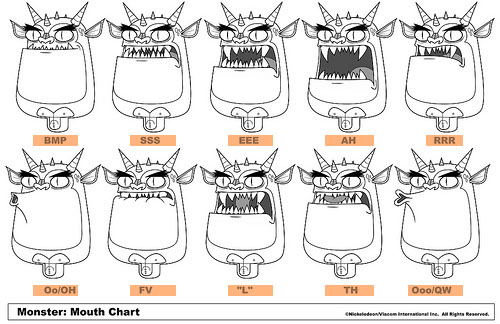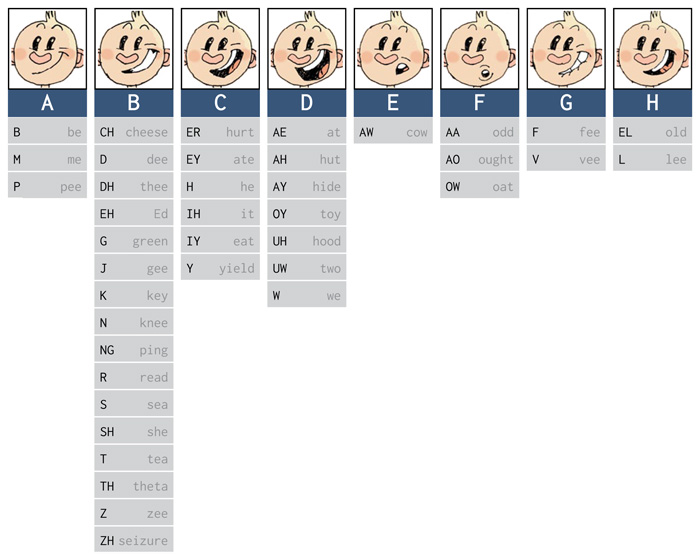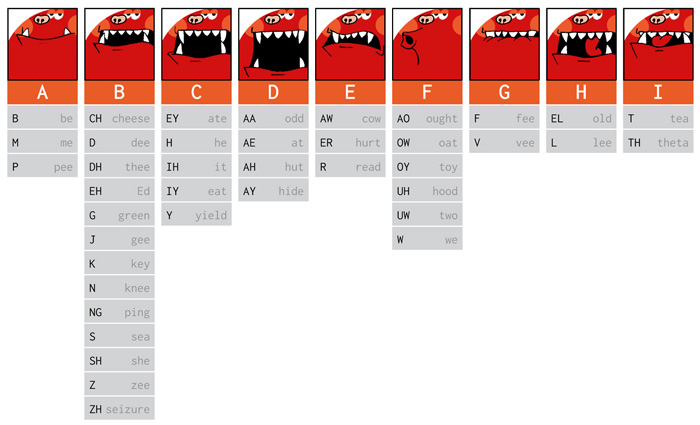The Hanna-Barbera chart – modern use
The basic physics of speaking have not changed since the 1960s, when the Hanna-Barbera mouth chart was invented – but does this mean that the chart is once and for all perfect?
New, exciting studios such as Frederator, have come up with entirely different ways of producing a mouth chart; here is a typical model sheet from Fan Boy and Chum Chum:

Monster, from Fanboy & Chum Chum – (c) Nickelodeon/Viacom International Inc.
Source
How it fits
I've studied the above way of laying out the visemes, and it turns out, it fits the Hanna-Barbera model like a glove:
A <– bmp
B <– sss
C <– eee
D <– ah
E <– rrr
|
F <– Ooo/QW
G <– FV
H <– L
I <– TH
J <– Oo/OH
|
Let's remap the phonemes from the Frederator monster to our A to H model. As you know, our basic, vanilla speaker matches these phoneme to visemes:

The Frederator model is not difficult to remap into our A to H mouth chart:
The speaker Spats was made from aligning the Frederator model. I find that the following phoneme distribution gives good-looking lip sync:

To recap, face A carries the "bmp" sounds. Face B, called "sss", carries – among others – the sibilants.
Face I diverges from our basic model, as this maps the voiced "TH" phonemes, in which the tongue tip protrudes slightly between the teeth.

See how Spats performs
Speakers built from this model
For your use, I drew a couple of speakers from the translated Frederator model:
 Fred Fred
 Manchu Manchu
 Spats Spats
 Demon Demon
Fred and Manchu perform especially well – they also carry an extra tween viseme in the K position for smoother A -> D transitions. The Spats/demon model has solid, aggressive energy about it.
As always, I recommend you tweak the output, to add emotion and finesse to the machine-parsed speech.
|

 Fred
Fred
 Manchu
Manchu
 Spats
Spats
 Demon
Demon


